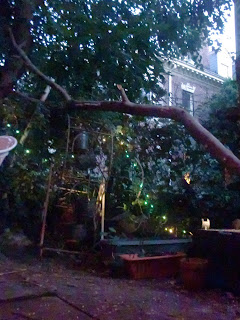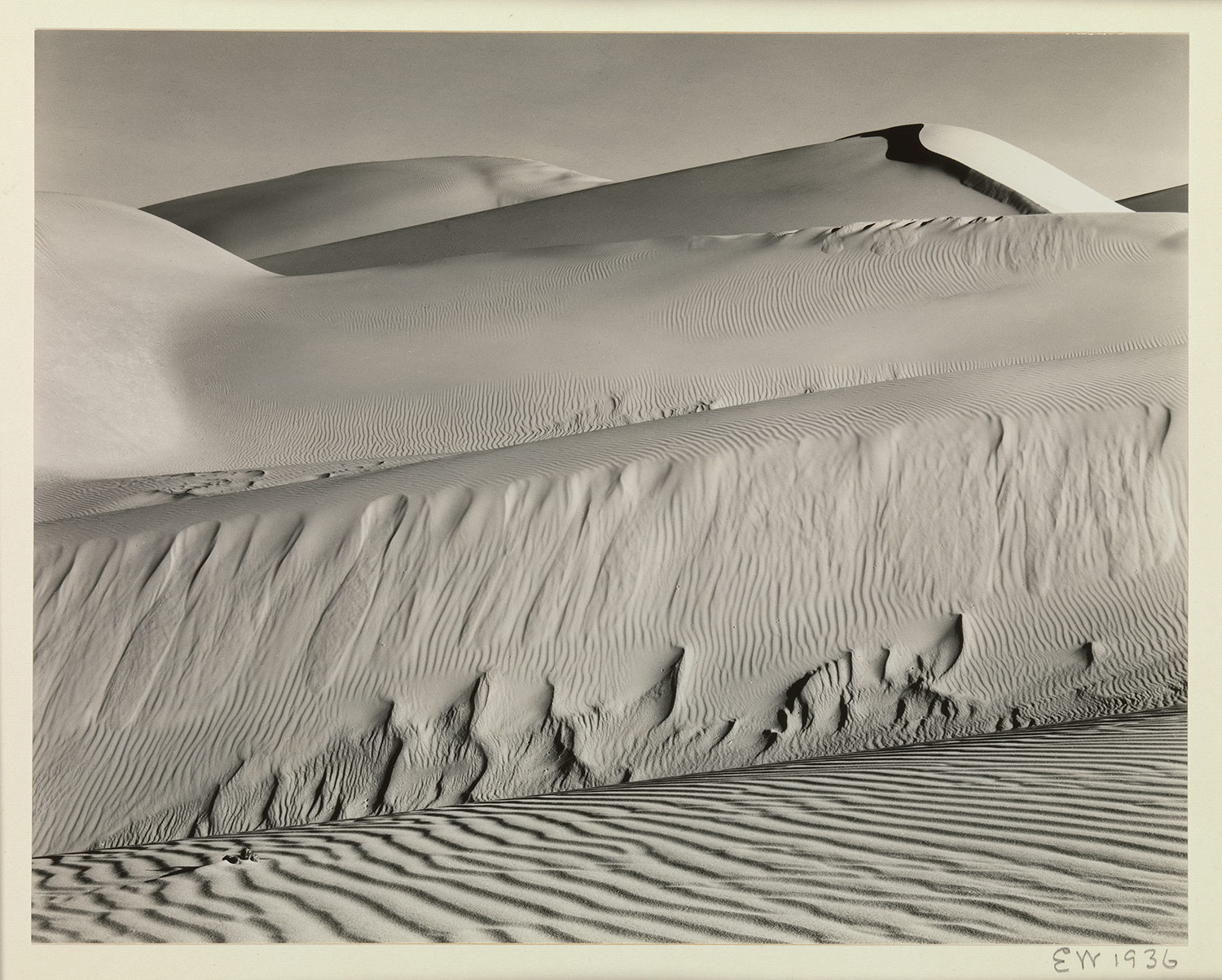Video: http://www.youtube.com/watch?v=8SuGY31JVgQ
Companion blog (you can click on the images for related links): http://allesiebenjahre.tumblr.com
Monday, December 19, 2011
Documentary Report: The Office
Kieszlowski’s film The Office takes as its subject the complex machinery of a state insurance office in communist-era Poland, into which it plunges the viewer quite abruptly without explanation or context (though the latter would likely be fairly obvious to a contemporary Polish viewer). The style appears to be influenced by early cinema vérité films such as Primary, with frequent, though slight, camera shake; some of the shots appear to have been carefully planned in advance, however, and focus and exposure are much more consistent than in some of the rougher vérité works.
Until the last thirty seconds or so, the film is dominated by medium shots and medium close-ups. Typically we see the upper third of a figure, either the clerk or the person being served. Sometimes the shot comprises both figures, and at times a shot-reverse-shot technique is used to alternate between them. Full close-ups of figures are rare or nonexistent, although several are used to indicate the rituals of the bureaucrats across the glass divider: a heating coil being placed into a kettle of tea, a pencil being sharpened, a glass of tea being poured. A few medium to full close-ups of documents in the hands of the patrons are also inserted, during interactions between the patron and the clerk. The backgrounds are dominated by the whitewashed walls of the space, a generally drab, featureless architecture typical of midcentury government buildings. The final shots, in which the words “throughout your lifetime” are repeated by the clerk to different patrons, show rows of near-identical file folders, crammed into wooden shelves. The slamming of a door on the soundtrack ends the film.
From the beginning, the continual voice of the clerk (heard nearly from the beginning to the end of the film, with only occasional interruptions when those being waited on ask for clarification), with its enumeration of such seemingly needless complexities as a specially shaped stamp and a decades-long work history, dehumanizes both her interlocutor and herself. The film’s ending brings this dehumanizing effect to an appropriate climax, creating the impression that, insofar as the workings of the supposed “worker’s state” are concerned, the average worker is a purely fungible value, to be filed and catalogued in the manner of any other useful object. The sporadic, wordless shots of various people in the line, and the close-up shots from within the office, do serve at the same time to return a sense of humanity to these figures, and particularly to insist that the clerks are simply trying as best they can to deal with the tedium and absurdity of their work.
For such a short film, barely five minutes long, Kieszlowski does an excellent job of evoking the experience of working at and queueing in this office, and his careful editing and well-chosen shots succeed in creating a particular viewpoint rather than simply a basic documentation of the scene. The viewpoint expressed is, all things considered, rather shockingly candid for a communist country in this era, and it leads one to wonder how widely distributed the film had been. A touch of spirituality, particularly in the final shots of the rows of file folders, points toward later works such as the Decalogue series.
Wednesday, November 2, 2011
Soundscape (with Timothy MacBain)
Here's the link to the project I did with Timothy:
http://macbainsgradblog.blogspot.com/2011/10/soundscape.html
http://macbainsgradblog.blogspot.com/2011/10/soundscape.html
Tuesday, November 1, 2011
An Interview with Kazem Ariaiwand
I did something a little different for this project: since my initial idea fell through, I decided to take a preexisting interview and re-edit it to create a very different story. Here are the links:
http://soundcloud.com/berroci/an-interview-with-kazim (Sound effects)
http://soundcloud.com/berroci/an-interview-with-kazem (No sound effects)
And here's the link to the original story:
http://downloads.bbc.co.uk/podcasts/worldservice/docarchive/docarchive_20100219-1006a.mp3
http://soundcloud.com/berroci/an-interview-with-kazim (Sound effects)
http://soundcloud.com/berroci/an-interview-with-kazem (No sound effects)
And here's the link to the original story:
http://downloads.bbc.co.uk/podcasts/worldservice/docarchive/docarchive_20100219-1006a.mp3
Wednesday, October 12, 2011
Sounds from my room (10/12/11, 2:02 pm - 2:05 pm)
1. The chirping sound of someone unlocking a car
2. A thumping from upstairs, another thumping (possibly someone moving a piece of furniture)
3. A scraping sound from upstairs
4. A car going by
(Note: all throughout, there is the low atmospheric sound from outside my window, along with the hum of my computer.)
5. A louder sound, almost like a saw
6. The saw sound again; a creak from a door
7. A more muted saw sound
8. A car with a loud muffler going by
9. Another car, moving more quietly
10. A very distant car
11. A closer car
12. A very low bass sound somewhere in the building
13. A metallic rattling
14. Footsteps in the apartment
15. A door shutting in the apartment; a second door shutting
16. Another car going by
17. A car alarm going off
18. A more distant car
19. The hum of an appliance
20. A car horn
21. Someone going down the stairs
22. Another car
23. A quick, sharp sound in the basement, maybe a wire being moved
24. Another car
25. Footsteps upstairs
26. Someone moving loudly down the stairs, possibly carrying something
27. Another, distant car
28. Footsteps again, then a door closing
29. More footsteps
30. A car going by in the distance, honking
31. A very distant car
32. A closer car
2. A thumping from upstairs, another thumping (possibly someone moving a piece of furniture)
3. A scraping sound from upstairs
4. A car going by
(Note: all throughout, there is the low atmospheric sound from outside my window, along with the hum of my computer.)
5. A louder sound, almost like a saw
6. The saw sound again; a creak from a door
7. A more muted saw sound
8. A car with a loud muffler going by
9. Another car, moving more quietly
10. A very distant car
11. A closer car
12. A very low bass sound somewhere in the building
13. A metallic rattling
14. Footsteps in the apartment
15. A door shutting in the apartment; a second door shutting
16. Another car going by
17. A car alarm going off
18. A more distant car
19. The hum of an appliance
20. A car horn
21. Someone going down the stairs
22. Another car
23. A quick, sharp sound in the basement, maybe a wire being moved
24. Another car
25. Footsteps upstairs
26. Someone moving loudly down the stairs, possibly carrying something
27. Another, distant car
28. Footsteps again, then a door closing
29. More footsteps
30. A car going by in the distance, honking
31. A very distant car
32. A closer car
Wednesday, October 5, 2011
Pieter Hugo - Permanent Error
When a computer game, a website, or a spreadsheet becomes obsolete, it tends, in a way, to split in two: on the one hand there is the “real” file or database, the one that we maneuver through or tinker with on the screen, and on the other there is the object, the disk or the piece of hardware that encloses it. The first can easily vanish without a trace (if it isn’t mechanically mothballed by the Internet Archive or another website-preservation outfit), while the latter lingers on as slowly decomposing junk, spent evidence now free to be channeled across the globe for whatever use it may serve. Most often it moves from a developed to an undeveloped country, perhaps even roughly back to where it was manufactured. A peculiar, unsavory circle closes, from basic subsistence, through comfort and advancement, then back to subsistence again. It is the raw factuality of this unsavoriness that Pieter Hugo documents in his exhibition of photographs, entitled Permanent Error.
The location is a dump on the fringes of Accra, one of the largest cities in West Africa; it serves as a nightmarish version of a data center, with clouds of plastic fumes in place of any service or transmission. The hardware and software are incidentals in the retrieval of metal wires and other metallic bits of material, to be carried or carted off to communities nearby.
Judging from the photographs, the bulk of the work is done by young men, most seemingly in their teens or twenties, who dig through the heaps with long picks or with their hands. One wipes his eyes, probably affected by the noxious smoke that fills the air. A lone woman stares pensively at the viewer, a shiny metal bowl hinting at everyone’s justification for lingering around this empty landscape of dirt and white plastic. Though, as the titles of each work remind us, this place is technically a market, hardly any signs of trading or interaction can be seen; even in the two or three group photos the men generally focus on the ground before them, absorbed in their task. Whether this is due to the photographer’s staging—clearly there is some, as in every picture there is at least one figure posing, unsmiling, for the camera—or the reality of the situation, it clearly expresses the unpleasantness and solitariness of the task.
Formally, the photographs possess a striking, though barren, beauty, with the occasionally rich colors of the figures pairing off elegantly against the dark, vacant landscape. The rising smoke would be enough by itself to draw the eye’s attention, in the absence of any portraiture, but the two in combination help to create the double effect of identification and alienation that, theoretically at least, carries across to the actual experience of the workers. The fire and smoke also make one aware of the images of international war that lurk on the horizon, yet another exportable commodity with its own particular varieties of detritus. As the narrator states in one of Harun Farocki’s recent films: “Like our commodities, most of our wars, these days, are made in the third world.” It is only natural, then, that the pursuit of a means of survival in these places should become a form of low-level, self-inflicted chemical warfare.
Monday, October 3, 2011
Wednesday, September 14, 2011
Tuesday, September 6, 2011
Assignment #1 - 10 photos
5 photos that I like
1.
Brassai, Bal musette, 1932
This photograph's especially interesting, I think, because of the flatness/compression that the mirror gives to it--and also because of the way it plays on the idea of photography itself as a mirror.
2.
Edward Weston, Dunes, Oceano, 1936
3.
Thomas Ruff, Substrat 1I, 2001
3.
Julius Shulman, Case Study House No. 21, 1958
The balance between chilliness and sensuality in this photo is really excellent (if I remember right, the woman is the owner of the house, and the man in the background is the architect). It's hard to imagine it being used in a promotional flyer or something like that.
4.
Candida Höfer, Palacio Nacional de Queluz II, 2006
5.
Weegee, Heatspell, 1938
5 photos that I don't like
1.
Gregory Crewdson, Untitled - Winter, 2004
2.
Ken Rockwell, La Jolla, California, 2001
3. Brian Brewington, Snowy Range Sunrise, 2008
4.
Adel Abdessemed, Anything can happen when an animal is your cameraman, 2008
This guy became a little infamous a few years ago for a video piece that involved six or seven different species of animals killing each other in a pen. His work (both the photographs and the rest) seems to try to play on themes of foreignness and the postcolonial situation, but to me just comes across as shallow and opportunistic.
5.
Unknown, Every journey began in Africa, 2011
1.
Brassai, Bal musette, 1932
This photograph's especially interesting, I think, because of the flatness/compression that the mirror gives to it--and also because of the way it plays on the idea of photography itself as a mirror.
2.
Edward Weston, Dunes, Oceano, 1936
3.
Thomas Ruff, Substrat 1I, 2001
3.
Julius Shulman, Case Study House No. 21, 1958
The balance between chilliness and sensuality in this photo is really excellent (if I remember right, the woman is the owner of the house, and the man in the background is the architect). It's hard to imagine it being used in a promotional flyer or something like that.
4.
Candida Höfer, Palacio Nacional de Queluz II, 2006
5.
Weegee, Heatspell, 1938
5 photos that I don't like
1.
Gregory Crewdson, Untitled - Winter, 2004
2.
Ken Rockwell, La Jolla, California, 2001
3. Brian Brewington, Snowy Range Sunrise, 2008
4.
Adel Abdessemed, Anything can happen when an animal is your cameraman, 2008
This guy became a little infamous a few years ago for a video piece that involved six or seven different species of animals killing each other in a pen. His work (both the photographs and the rest) seems to try to play on themes of foreignness and the postcolonial situation, but to me just comes across as shallow and opportunistic.
5.
Unknown, Every journey began in Africa, 2011
Subscribe to:
Posts (Atom)



















